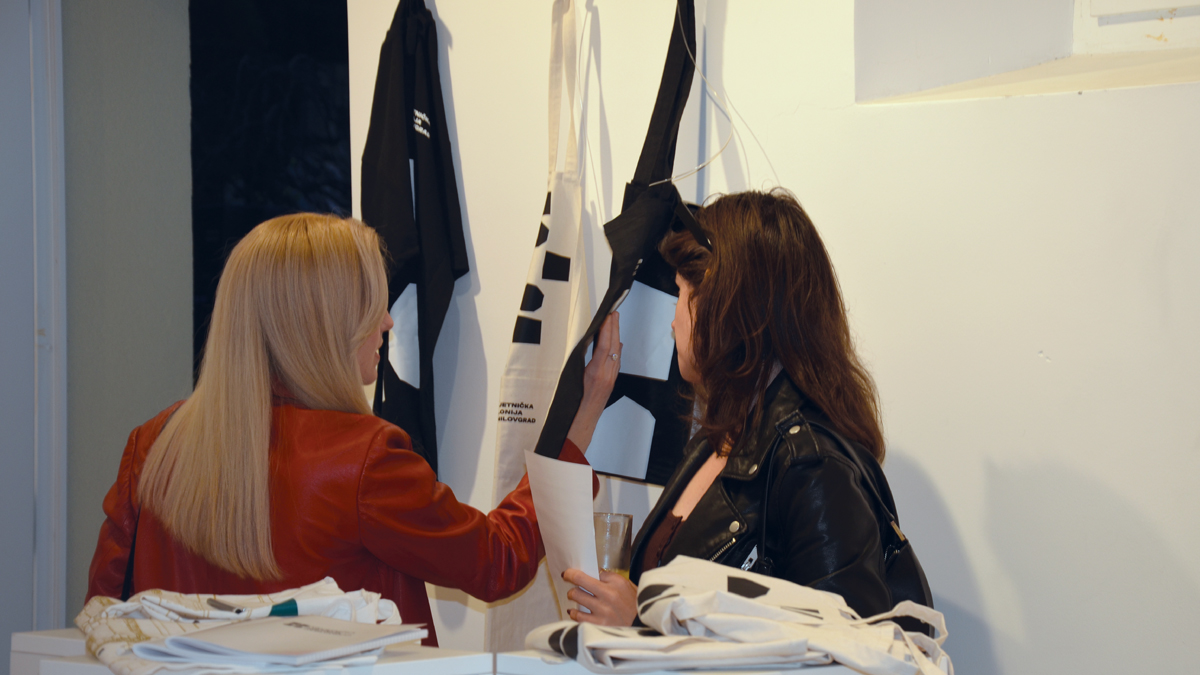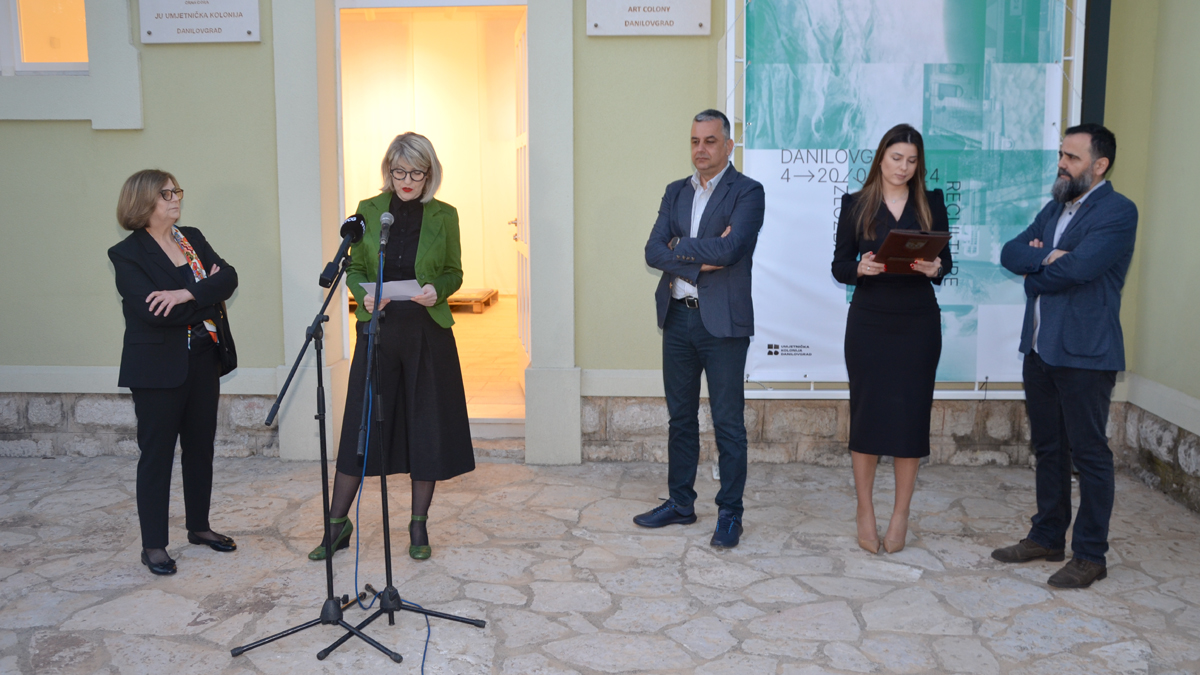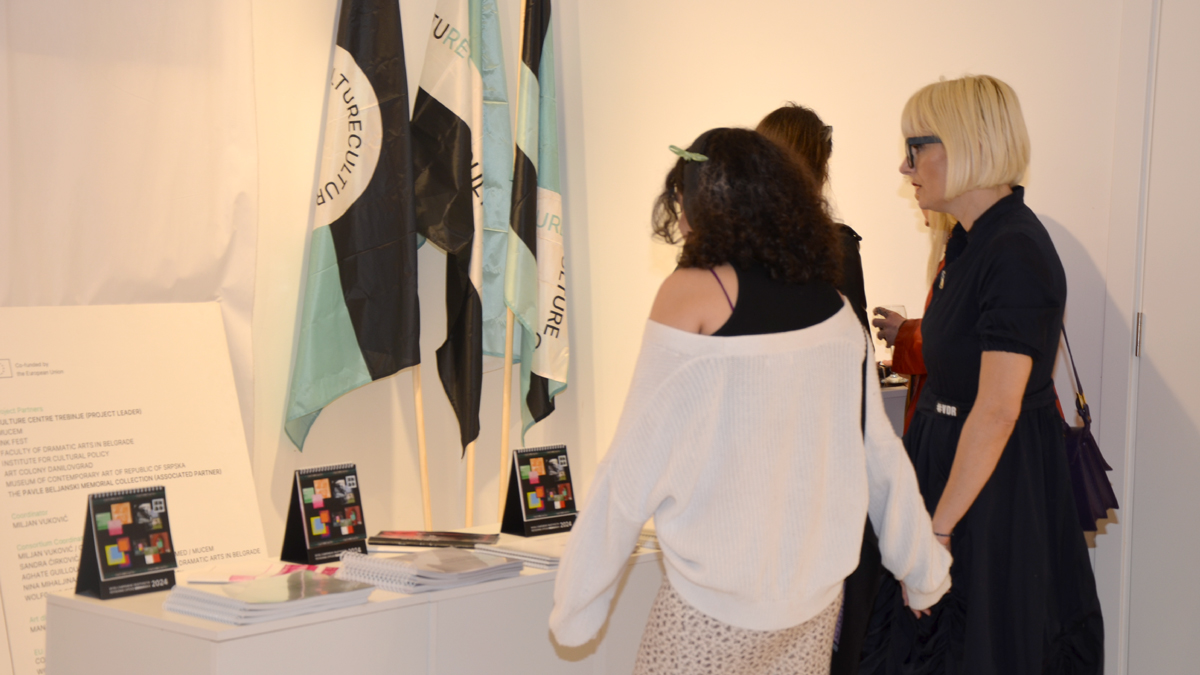In the next segment of the interview, we explore how the Art Colony Danilovgrad, a traditional institution preserving the international heritage of stone sculpture, responded to the challenges posed by the ReCulture project. Vesna Jovović, the representative of the Colony, reveals how obstacles were overcome and what new ambitions have been set for this institution.

Mrs. Jovovic, can you first tell us what was the institution’s key motivation for participating in the project?
The key motive for our institution was the desire to revitalize and refresh our visual identity. As an institution dedicated to the promotion of art and culture, we recognized the importance of keeping up with contemporary trends and standards in order to attract new audiences and remain relevant in the dynamic cultural landscape.
At what level are the Western Balkans cultural institutions regarding their visual presentation and identity? After experiencing this project and gaining insights into European practices (including examples from Mucem and exhibitions like Design for Culture), what do you think is mostly lacking in visual communication practices in the region?
I would say that initially our institution was not at a particularly admirable level in terms of visual presentation and identity. However, after the experience in the project and exposure to European practices, we realized the importance and methods for improving and modernizing our visual identity to align with the latest trends and audience expectations.
Generally speaking, for cultural institutions in the Western Balkans, I believe the greatest shortcomings are reflected in the insufficient recognition of the importance of design as a segment of visual communication and promotion. There is also a lack of awareness regarding the importance of consistency and innovation in design. Through the ReCulture project, we gained insight into European practices and realized how important it is to give greater emphasis to design and visual communication in order to enhance our cultural scene.
This project represents an overlap of European design and cultural standards with the potential of young designers from the WB countries. What contribution would you highlight from EU partners in working with you or on the project in general?
The EU partners brought rich experience and expertise in the fields of design and culture. Their support and mentorship were of great importance in guiding our work towards contemporary European standards. They also provided us with insights into the latest trends and practices in design and the cultural industry, which were crucial for defining our new design. Through working with them, we received valuable input for further development.
Developing a new identity is a complex process. What was crucial in working with the design team?
I believe that the key was openness to collaboration and exchanging ideas with the design team. Working with young designers brought fresh perspectives and creative approaches, enriching the process of developing a new identity. Additionally, we appreciated the patience and dedication of the designers in adapting and iteratively improving the design according to our needs and desires.

Was there any part of the process particularly challenging or unexpected, and how could it have been prevented? Were some activities unnecessary, or were there any missing?
It can be said that the challenge lay in the organization and coordination of all project activities, which were plentiful over the three years of project implementation. Therefore, the key to adequately carrying out all activities and achieving the planned objectives was to establish quality and timely communication among all partners and design teams. In this regard, I would like to particularly commend the coordination by the lead partner and the efficient communication among all team members, as I believe it was of paramount importance in overcoming all challenges and achieving successful results.
The project officially ends in a few months, but a significant task lies ahead for you. What are your initial steps to ensure the audience adequately embraces your institution’s new visual identity?
Our initial steps in promoting the new visual identity will be focused on implementing it at all planned exhibitions and events, particularly within the framework of our largest annual event, the International Sculpture Symposium. We plan for the new identity to be the focal point of all our activities, providing visitors with a higher-quality experience when engaging with our institution. Additionally, we will continue to utilize our updated website and visual identity on social media platforms as powerful tools in promoting our work and attracting new visitors. Through regularly updating content, interactive elements, and direct communication with the audience, we aim to sustain interest in our activities and build a stronger connection with our audience. With these steps, we aim to ensure that our new visual identity is not only noticed but also embraced by the audience in the right manner, with each visitor experiencing our institution as a place of inspiration, creativity, and cultural exchange.
What new insight or skill in working with partners and young designers have you gained during the three-year process? Has the project offered (or confirmed) any working/thinking methods you plan to apply in your future work?
The entire implementation process has resulted in the development of all team members in terms of communication efficiency, teamwork, and creative problem-solving. Additionally, we have been reminded of the importance of supporting young talents. Working with partners from different countries has also contributed to the development of our ability to adapt to various work styles and practices, enriching our overall work practice and experience.
What is your fondest association with “ReCulture”?
In short, our fondest association with ReCulture is unity and inspiration. The project united us with partners from various parts of Europe and showcased the power of collaboration and creativity in promoting culture and art. The experience in the project has left a profound and lasting impression on us and represents an unforgettable journey.
